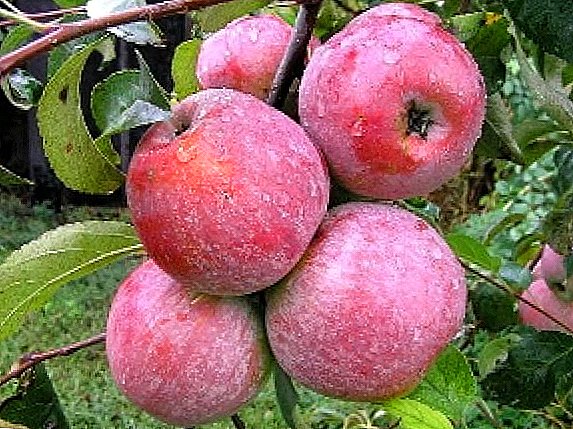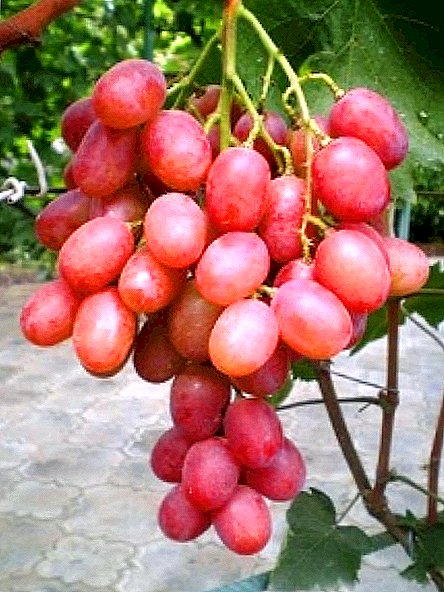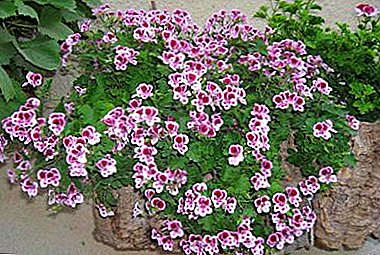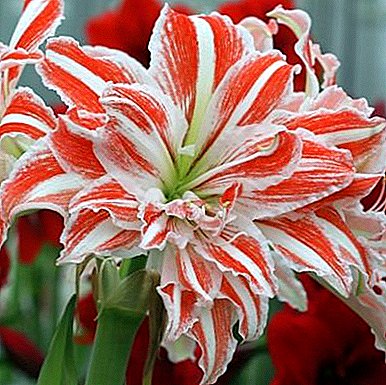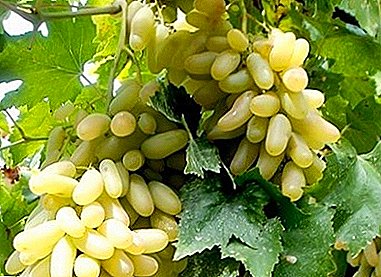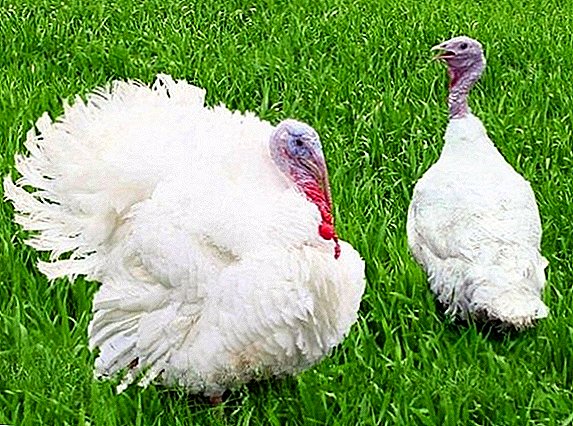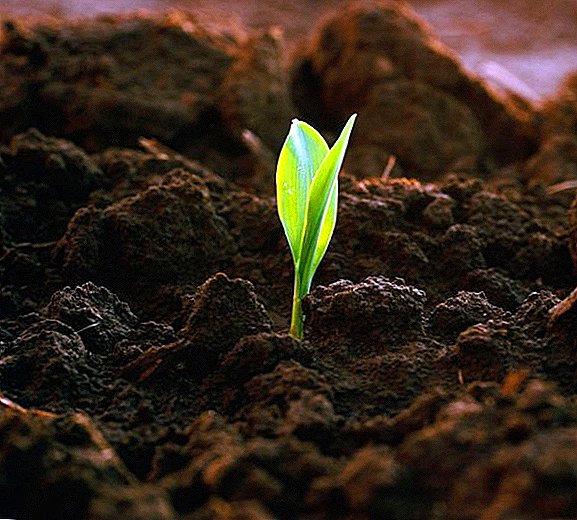 Increasingly, gardeners prefer to use organic fertilizers as feed. One of them is peat. However, be aware that it is not suitable for all soils. Yes, and apply this fertilizer must be wisely, so as not to harm either the plants or the ground.
Increasingly, gardeners prefer to use organic fertilizers as feed. One of them is peat. However, be aware that it is not suitable for all soils. Yes, and apply this fertilizer must be wisely, so as not to harm either the plants or the ground.
About what is peat, how it happens and how to properly apply it in the form of fertilizer in the garden plot, read in the following sections.
Did you know? Peat is widely used in various fields. It is used as a fuel in public utilities, as a heat-insulating material in construction, as a fertilizer in agriculture, raw materials in the chemical industry, bedding in animal husbandry. The beneficial properties of peat are used in medicine.
How peat is formed in nature, types of peat
 Peat - It is a natural combustible mineral of plant origin. It represents a dense mass of black or dark brown color, which consists of partially decomposed in the marshes of plant residues mixed with the ground.
Peat - It is a natural combustible mineral of plant origin. It represents a dense mass of black or dark brown color, which consists of partially decomposed in the marshes of plant residues mixed with the ground.
In this case, the high humidity and the absence of oxygen prevent the complete decay of marsh plants. There is an opinion that peat is the first stage of coal formation.
As a fossil, peat is formed on peat bogs, in river valleys, on watersheds. Accumulation of it there may occur over millennia. Peat lies on the soil surface or at a small (up to 10 m) depth under a layer of mineral deposits.
Did you know? Scientists estimate that the world's peat deposits amount to 250 to 500 billion tons. Peatlands make up 3% of the land surface.Depending on the growing conditions and the accumulation of plants that form this natural material, peat is divided into three types:
- horse riding;
- lowland;
- transition.
 About high peat Scientific sources say that it is such a mineral, which consists of 95% of the remains of plants of the upper type, most often pine, larch, cotton grass, marsh sedge, etc.
About high peat Scientific sources say that it is such a mineral, which consists of 95% of the remains of plants of the upper type, most often pine, larch, cotton grass, marsh sedge, etc.
It is formed in elevated areas - slopes, watersheds, etc. It has an acid reaction (pH = 3.5-4.5) and a low degree of decomposition.
In agriculture mainly used for composts, container mixtures, as mulch, a substrate for greenhouses.
 Lowland peat consists of 95% of not completely decomposed lowland plants. Spruce, alder, birch, willow, fern, reed, etc. are most often involved in peat formation of this type. It is formed in ravines and floodplains of rivers.
Lowland peat consists of 95% of not completely decomposed lowland plants. Spruce, alder, birch, willow, fern, reed, etc. are most often involved in peat formation of this type. It is formed in ravines and floodplains of rivers.
Lowland peat has a neutral or weakly acid reaction (pH = 5.5-7.0), thanks to which it has been used in reducing the acidity of the soil. It is the most valuable and rich in minerals (contains up to 3% nitrogen, up to 1% phosphorus). Of all the types, the most nutritious and common in the application.
 Transition type It contains 10-90% of semi-decomposed plants of the upper type, the rest is composed of plants of the lowland type.
Transition type It contains 10-90% of semi-decomposed plants of the upper type, the rest is composed of plants of the lowland type.
Formed in intermediate relief forms. It has a slightly acid reaction (pH = 4.5-5.5).
Transition peat as well as lowland peat is used as a fertilizer for a vegetable garden, because it brings great benefits to the soil.
Each type, in turn, is subdivided into three subtypes, reflecting the vegetation subtype from which this peat was formed. These subtypes are distinguished:
- forest;
- forest forest;
- swampy.
- woody (contains at least 40% wood residues);
- wood-herbal (contains 15-35% of wood residues, among others - herbaceous predominate);
- wood-moss (it contains 13-35% of wood residues, among others - moss-dominated);
- grass (consists of not less than 10% of wood residues, up to 30% of mosses, others are grass residues);
- grass-moss (composed of: wood residues - 10%, mosses - 35-65%, grass residues);
- moss (contains 10% wood residues, 70% of moss).

In agriculture, peat is divided into two groups:
- light (light);
- heavy (dark).
Characteristics of peat, mineral properties
To deal with the nature of peat, consider the composition and properties of this fossil. So, peat consists of:
- humus (partially decomposed organic products);
- minerals;
- water.

- carbon - 40-60%;
- hydrogen - 5%;
- oxygen - 2-3%;
- sulfur, phosphorus, potassium - in a small amount.
Did you know? Some people have a question: "Is peat a mineral or not?". It should be considered sedimentary rock.Due to the high carbon content, the average heat of combustion of peat is 21-25 MJ / kg, which can increase with the decomposition and content of organic compounds - bitumen.
The appearance, structure and properties of this natural formation change as the stages of decomposition change. So, the color changes from light yellow to black. Different from the degree of decomposition will be the structure - fiber or amorphous, as well as porosity.
The greater the degree of decomposition of peat, the less it will contain water-soluble and easily hydrolyzed substances, and the higher will be the content of humic acids and non-hydrolyzed residue.
Did you know? About the properties of peat known since ancient times. The first mentions of him are found in the writings of the Roman scholar Pliny the Elder, dated 77 AD. There are sources that indicate that peat was used in the XII-XIII century in Scotland and Holland. In Russia, the study of fossil began in the XVII century.
 The main property of peat is the accumulation of carbon and photosynthesis products.
The main property of peat is the accumulation of carbon and photosynthesis products.Putting it in the soil helps to improve its moisture and breathability, porosity, microbiological and nutritional composition.
In addition, peat is able to heal the soil, reduce the level of nitrates in it, weaken the effect of pesticides. Due to the content of humic and amino acids, it improves plant growth and development. These properties can explain why peat is so useful for the garden.
The quality of peat is estimated depending on the levels of nitrogen, potassium, phosphorus. It is also rated according to criteria as ash, humidity, calorific value, degree of decomposition.
How to use peat as fertilizer
The use of lowland and transitional peat at the dacha as a fertilizer allows to improve the physiological properties of the soil, making it more air-and moisture-permeable. Also, peat has a beneficial effect on the development of the root system of plants.
It is best to apply it on sandy and clay soils. To feed fertilizer on the basis of peat fertile land with a humus level of 4-5% is irrational. But is it worth it to make loam, an open question, discussions on this issue are still underway.
 Since high-moor peat can provoke acidification of the soil, it is not used as a fertilizer, used only for soil mulching. However, it is worth making a reservation that there are several plants that require exactly acidic or slightly acidic soil when planting. These include blueberries, heather, rhododendron, hydrangea. Such plants fertilize and mulch with top type of peat.
Since high-moor peat can provoke acidification of the soil, it is not used as a fertilizer, used only for soil mulching. However, it is worth making a reservation that there are several plants that require exactly acidic or slightly acidic soil when planting. These include blueberries, heather, rhododendron, hydrangea. Such plants fertilize and mulch with top type of peat.
In order for the effect of peat feeding to be maximum, it is necessary to use peat, which has a degree of decomposition of at least 30-40%. Also, when entering into the soil need to pay attention to such important points:
- lowland peat before use is subject to ventilation and grinding;
- dressing material should not be overdried (optimum humidity - 50-70%).
Important! In horticulture and floriculture, peat in its pure form is practically not used; it is used for fertilizing plants in mixtures with other organic and mineral fertilizers or in compost. Pure application can be detrimental to plant crops and harmful to the soil.In order not to harm the incorrectly conducted dressings, you first need to know peat decomposition rate. There is a way to quickly identify it.
To do this, you need to take a handful of peat, squeeze in a fist, and then hold on a white sheet of paper.
If a weak trace remains or is not visible at all, the degree of decomposition is no more than 10%.
 The trail of yellow, light gray or light brown color indicates about 10-20 percent decomposition.
The trail of yellow, light gray or light brown color indicates about 10-20 percent decomposition.
Brown, gray-brown color indicates that peat has a biomass decomposed by 20-35%.
With the highest degree of decomposition - 35-50% - peat stains the paper in rich gray, brown or black color, while the smear will be smooth. Also he will stain your hand.
If the peat contains substances that have decomposed by 50% or more, the strip on the paper will be painted in dark colors.
The use of peat on the garden plot is possible with:
- soil application to improve its composition;
- preparation of the substrate for planting;
- as a raw material for the preparation of fertilizers;
- as a mulch for shelter of plants before the winter period;
- for the manufacture of peat blocks for seedlings, strengthening the slopes, lawn arrangement.
 The main purpose, why you need to make peat, is to improve the properties of the soil. To achieve it, peat at any time contribute 2-3 buckets per 1 square meter. This will be enough to increase the level of useful organic matter by 1%. Such top dressing can be done annually, gradually bringing the level of soil fertility to the optimum.
The main purpose, why you need to make peat, is to improve the properties of the soil. To achieve it, peat at any time contribute 2-3 buckets per 1 square meter. This will be enough to increase the level of useful organic matter by 1%. Such top dressing can be done annually, gradually bringing the level of soil fertility to the optimum.
When mulching is used as pure peat, and mixing it with sawdust, pine needles, bark, straw, manure.
Important! Before mulching, reduce the acidity of peat by adding wood ash, lime or dolomite flour.However, it is especially useful to use peat as a fertilizer in the form of compost.
Peat compost: how to make and how to fertilize plants
There are several options for the preparation of compost from peat.
Peat compost. Ventilated peat moisture 70% lay a layer of 45 cm under a canopy or film. They make it a recess into which the animal feces is poured, sprinkling them with peat so that they are completely absorbed. On each side, compost is strengthened with earth to create a special microclimate. When the compost material is dried, it is watered. It will be suitable for use after a year. It is better to apply in the spring. Consumption - 2-3 kg / 1 square. m
 Compost from peat and manure. For the preparation of this fertilizer will fit any manure: horse, poultry, cow. The principle is to lay a layer of peat (50 cm) and a layer of manure in turn. The height of the bookmark should not exceed 1.5 m. Peat is used as the top layer. Once every 1.5-2 months, the compost should be mixed, changing layers in places.
Compost from peat and manure. For the preparation of this fertilizer will fit any manure: horse, poultry, cow. The principle is to lay a layer of peat (50 cm) and a layer of manure in turn. The height of the bookmark should not exceed 1.5 m. Peat is used as the top layer. Once every 1.5-2 months, the compost should be mixed, changing layers in places.
You should also periodically water herbal infusions, an aqueous solution of potash fertilizer, slurry.
Compost from peat, manure, sawdust. This recipe will tell you how to get a valuable self-made top-dressing based on peat. It is prepared like a layer cake. A layer of peat is poured down, sawdust is laid down with a layer of 10 cm, weeds, tops, and food waste 20 cm high. Then, if available, a 20-cm layer of manure is poured.
A layer of peat is laid on top. The whole pile should not exceed 1.5 m. From the sides it is covered with earth. Apply this compost after 1-1.5 years. All this time it is necessary to mix it, pour it with a solution of superphosphate, slurry. Make spring at the rate of 1-2 kg / 1 square. m
Important! Compost heaps must be protected from sunlight, building awnings for them. In the autumn they are covered with fallen leaves.
Compost is applied in the same way as manure - it is simply scattered with a shovel around the site or sprinkled the soil around the trunks of plants, followed by digging, introduced into the wells before planting. You must adhere to the following recommended guidelines:
- for digging - 30-40 kg / 1 square. m;
- in a pristvolny circle, a hole - a layer 5-6 cm thick.
Peat as a fertilizer: all the pros and cons
 We considered the main characteristics and properties of peat and what it is used for. In this section we will try to understand the feasibility of using this fertilizer, as well as compare its useful properties with other organic matter.
We considered the main characteristics and properties of peat and what it is used for. In this section we will try to understand the feasibility of using this fertilizer, as well as compare its useful properties with other organic matter.
The use of only one peat as a fertilizer is not capable of producing the expected results - it is better to use other types of dressings in the form of organic matter and minerals.
Today, when organic fertilizers have appeared in a wide accessibility for sale, gardeners and gardeners have a difficult choice in choosing which top dressing to give. If you are wondering: peat or humus - which is better, then we note that they are both good and not inferior to each other in their nutritional properties. However, the peat will need much less than humus. So, for example, on a plot of 10 square meters. m will require peat - 20 kg, humus - 70 kg.
Plus, you need to understand for what purpose you want to use a particular fertilizer. If the soil is very poor, then you first need to improve its structure with the help of peat, and later attend to its fertility, making humus. You can also use peat digging, and cover with a layer of humus on top for a better effect.
 Often there is a dilemma before owners of badlands: peat or black soil - which is better. Huge plus chernozem in a large content of humus - the organic part, which is necessary for plant growth.
Often there is a dilemma before owners of badlands: peat or black soil - which is better. Huge plus chernozem in a large content of humus - the organic part, which is necessary for plant growth.
However, this black soil is the most infected with diseases and pests, which threatens future harvests.
Peat also contains humus in an amount sometimes exceeding that contained in black soil. If it is mixed with sand, perlite (vermiculite), humus, then this substrate will surpass black soil in its properties.
Now you know the complete information about peat, what it is for and how to apply it correctly. If peat fertilizers are really shown on the land in your area, then do it correctly and efficiently, in order to avoid negative consequences.



